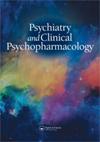Quality of life, depression, and anxiety in Turkish children with vitiligo and their parents
IF 0.5
4区 医学
Q4 PHARMACOLOGY & PHARMACY
引用次数: 7
Abstract
ABSTRACT BACKGROUND: Vitiligo is a chronic skin condition among psychocutaneous diseases that significantly affect psychiatric well-being of patients, social interactions, and overall quality of life. Only a limited number of studies about psychiatric well-being and quality of life in children with vitiligo and their parents are available. AIMS: With this study, we aimed to assess anxiety, depression, and quality of life in children diagnosed with vitiligo and their parents. METHODS AND MATERIAL: Forty-one vitiligo patients aged 9–16 years 30 healthy controls along with their parents were asked to fill out self-report forms that assessed quality of life (Pediatric Quality of Life Inventory – Child Form; PedsQL-C and Pediatric Quality of Life Inventory – Parent Form; PedsQL-P), anxiety (State–Trait Anxiety Inventory – STAI-C for children and Beck Anxiety Inventory – BAI for parents), and depression (Children’s Depression Inventory – CDI and Beck Depression Inventory – BDI for parents). RESULTS: Between groups, significant differences were found in PedsQL-C subscales measuring school functioning, psychosocial health, and overall quality of life. Regarding PedsQL-P scores, there was a significant difference in physical functioning, social functioning, and overall quality of life. No statistical significance was found between groups regarding CDI and STAI-C scores. There was a significant difference in BDI, with higher scores in parents of children with vitiligo. CONCLUSIONS: We believe measuring life quality with standardized instruments and techniques would be important in the assessment of the patient to evaluate the efficacy of treatment, specifically in chronic disorders. Further studies addressing these issues, especially in children, adolescents, and their parents are warranted.土耳其白癜风患儿及其父母的生活质量、抑郁和焦虑
背景:白癜风是一种慢性皮肤病,严重影响患者的精神健康、社会交往和整体生活质量。关于白癜风儿童及其父母的精神健康和生活质量的研究数量有限。目的:通过这项研究,我们旨在评估白癜风患儿及其父母的焦虑、抑郁和生活质量。方法和材料:41名年龄在9-16岁之间的白癜风患者,30名健康对照者及其父母被要求填写评估生活质量的自我报告表格(儿科生活质量量表-儿童表格;PedsQL-C和儿童生活质量量表-家长表格;焦虑(儿童状态-特质焦虑量表- STAI-C和父母贝克焦虑量表- BAI)和抑郁(儿童抑郁量表- CDI和父母贝克抑郁量表- BDI)。结果:两组之间,在测量学校功能、社会心理健康和整体生活质量的PedsQL-C亚量表中发现显著差异。关于PedsQL-P评分,在身体功能、社会功能和整体生活质量方面存在显著差异。CDI和sti - c评分组间比较无统计学意义。白癜风患儿的父母BDI有显著差异,得分较高。结论:我们认为,使用标准化的仪器和技术测量生活质量对于评估患者的治疗效果非常重要,特别是在慢性疾病中。进一步的研究解决这些问题,特别是在儿童,青少年和他们的父母是必要的。
本文章由计算机程序翻译,如有差异,请以英文原文为准。
求助全文
约1分钟内获得全文
求助全文
来源期刊

Psychiatry and Clinical Psychopharmacology
Medicine-Psychiatry and Mental Health
CiteScore
1.00
自引率
14.30%
发文量
0
期刊介绍:
Psychiatry and Clinical Psychopharmacology aims to reach a national and international audience and will accept submissions from authors worldwide. It gives high priority to original studies of interest to clinicians and scientists in applied and basic neurosciences and related disciplines. Psychiatry and Clinical Psychopharmacology publishes high quality research targeted to specialists, residents and scientists in psychiatry, psychology, neurology, pharmacology, molecular biology, genetics, physiology, neurochemistry, and related sciences.
 求助内容:
求助内容: 应助结果提醒方式:
应助结果提醒方式:


